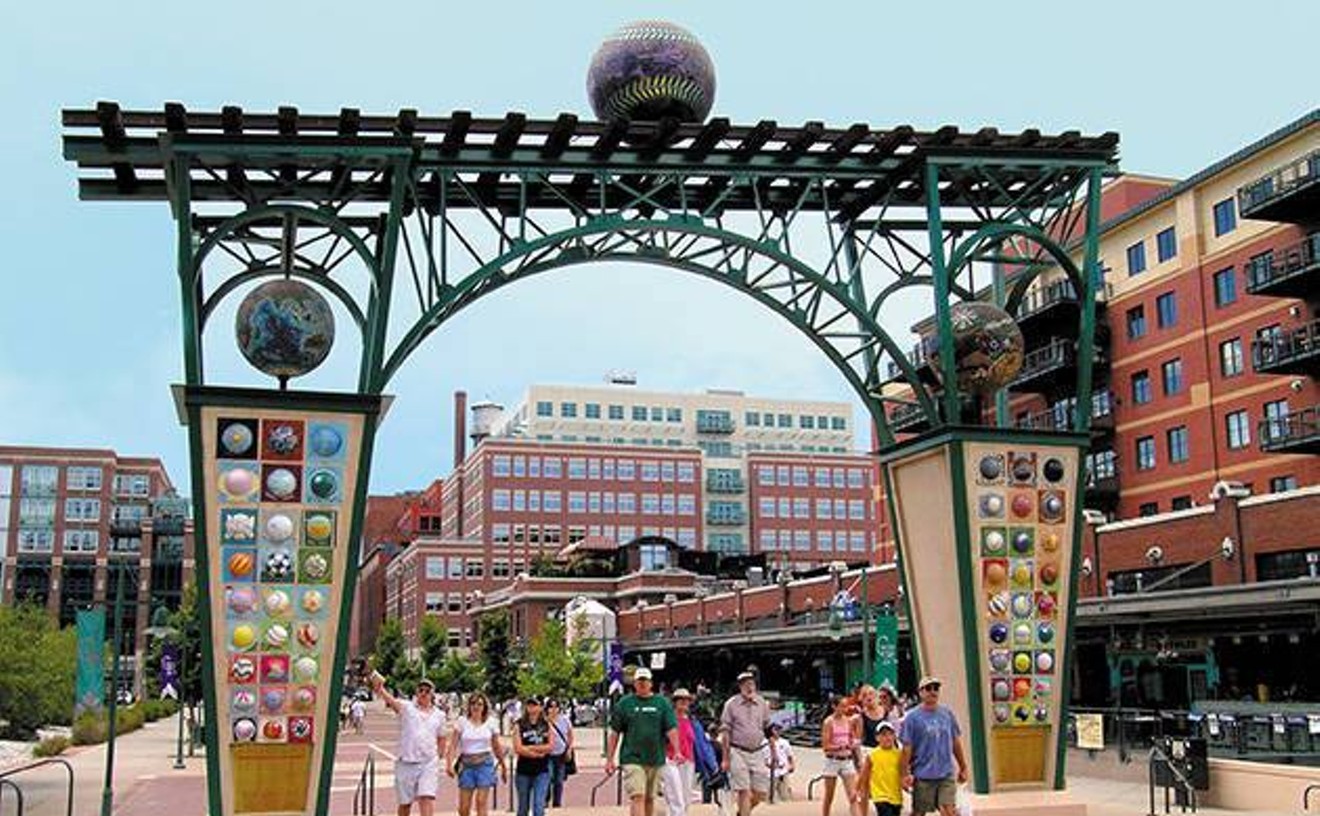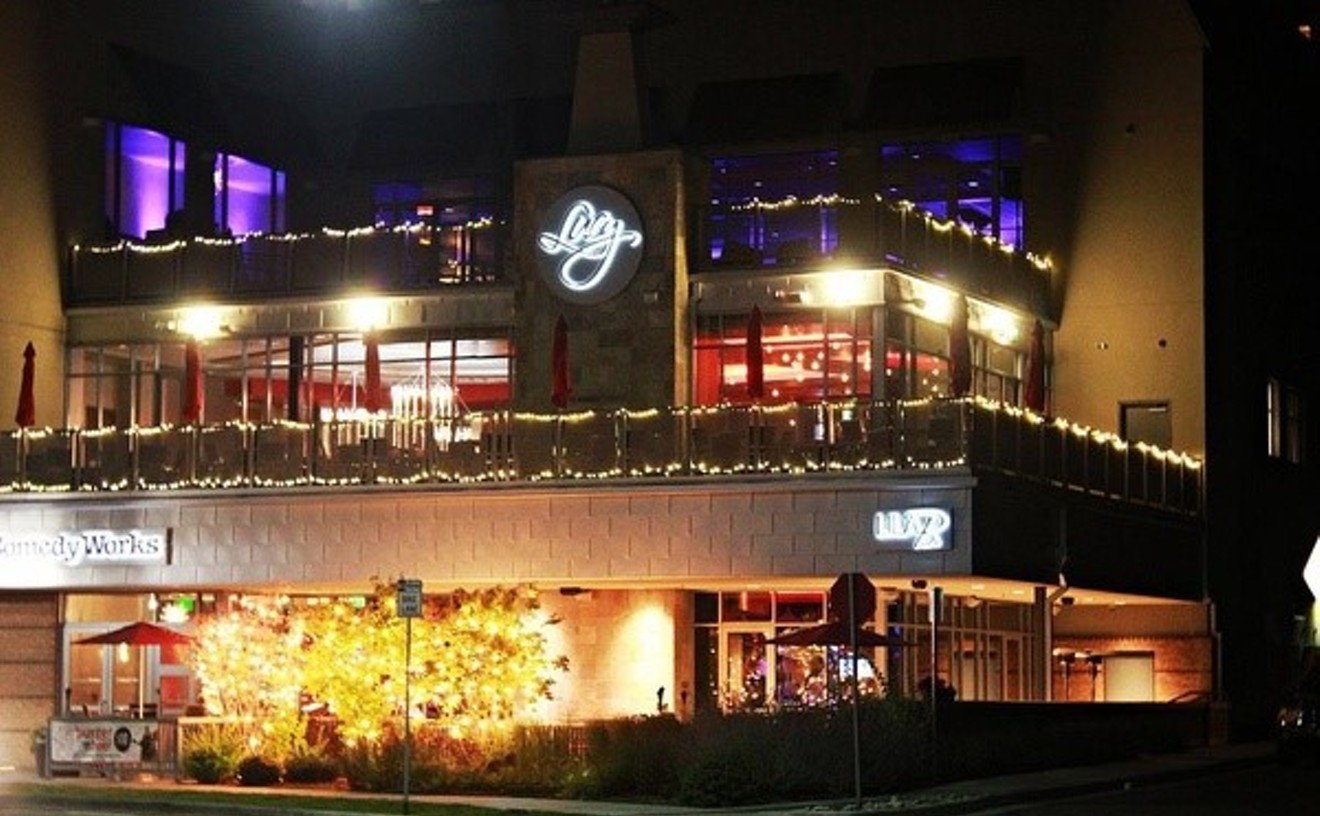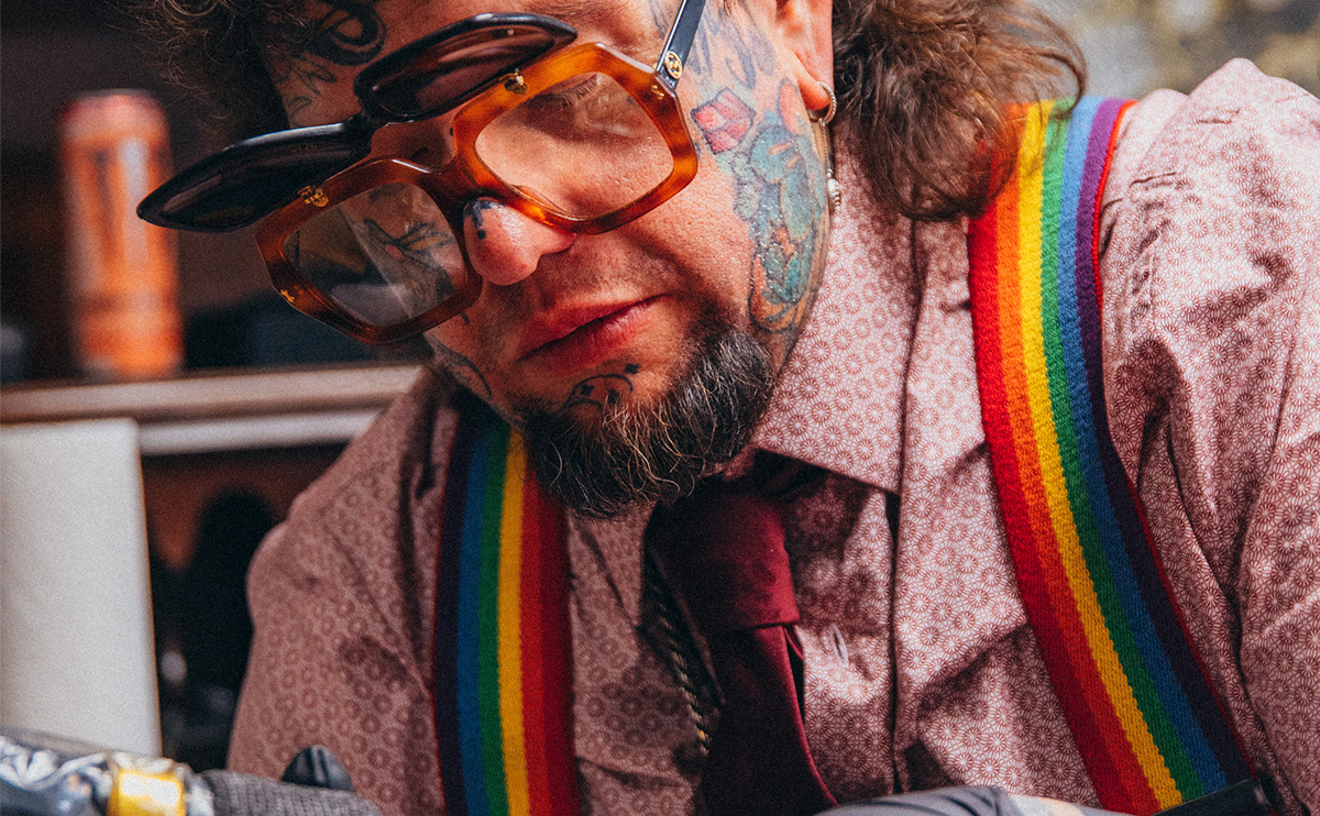Vanderlip was born Dianne Perry in Toledo, Ohio, in 1941. She earned a BFA at Ohio University in 1963 and went on to do graduate work at New York's Pratt Institute. In 1966, she moved with her first husband, the late Jay Vanderlip, to Philadelphia and opened the Vanderlip Gallery, where she made numerous art-world connections that have served her career well. In 1967, she was hired by the Moore College of Art to start its gallery; in that capacity, she organized some fifty exhibitions, including the first Alice Neel retrospective, and presented the first exhibition in the country of artists' books, a term she coined.
Here in Denver in the 1970s, the Denver Art Museum, which was founded in 1893, had just opened its striking tile-clad tower on the Civic Center at West 14th Avenue Parkway and Acoma Street. The 1971 building was designed by world-famous Italian architect Gio Ponti in partnership with Denver architect James Sudler. Ponti did the exterior, and Sudler laid out the interior in consultation with the museum's director, Otto Bach. At the time, the museum's collection was small, and there was neither a contemporary-art department nor a contemporary-art curator, though artist Vance Kirkland had volunteered in the position since the 1950s.
The distinction between modern and contemporary art had not yet been made at most museums, and at the DAM, to make matters worse, European art was separated from American art so that nearly all of the modernist European pieces, such as the Picassos, were marooned in a department with medieval sculpture and Old Master paintings.
In the late 1970s, the museum wanted to start a contemporary-art department, and then-director Thomas Maytham invited Vanderlip to apply for the curator's job. "At the time, in Philadelphia, I was doing some very interesting work, and job offers were coming in from all over the country," Vanderlip recalls. "And we [Vanderlip and her husband] were trying to decide whether we wanted to go to Denver or Chicago. We flipped a coin and it came up Chicago, and my husband said, 'Let's make it two out of three,' and it came up Chicago again, and my husband said, 'I don't want to go to Chicago; I want to go to Denver." So Vanderlip came out for an interview.
"When I got out of a cab on a November night, it was just dusk, and I looked at the building -- I swear to God, this is true -- and I thought to myself, 'Anybody who's got the chutzpah to put up a building like this really, really wants somebody who likes contemporary things,'" Vanderlip says. "That, combined with the fact that this was the biggest museum in the United States at that time that had no contemporary department. The opportunity to begin something has always been really important to me. I did it with the Vanderlip Gallery in Philadelphia, which was the first contemporary gallery there; I did it with the Moore College of Art, being the founding director of their gallery; and then the chance to do it at this scale. Oh, my God, how can you say no?
"The opportunity to come to a museum of this size, with the vision that this building embodied, was just irresistible," she adds. "And I might say that for whoever my successor is going to be, I'll bet they're going to feel the same way. The idea of coming in -- because of the architecture, it's going to make a big difference, this Libeskind building, to the kind of person who wants to be here next."
When Vanderlip was hired, Maytham and the museum's board of trustees wanted her to put together exhibits featuring only nationally known artists, since the country had little interest in international artists. Contemporary European art, not to mention Asian art, was considered irrelevant at the time. When Lewis Sharp took over as DAM director, in 1989, Vanderlip's mandate morphed considerably, as Sharp emphasized creating a collection and not just presenting shows. That meant that Vanderlip needed to raise money to purchase pieces and to solicit gifts from collectors. She's done very well on both counts.
The Modern and Contemporary collection at the DAM now numbers around 7,000 pieces, though some of them, such as the Monets and the Picassos, were acquired before Vanderlip was hired. However, Vanderlip has been involved with every acquisition for the department since she was hired, including major works by Alexander Calder, Mark di Suvero, Robert Arneson, Louise Bourgeois, Christo, Joan Brown, Dan Flavin, Agnes Martin, Ed Ruscha, Lucas Samaras, Sean Scully, Frank Stella, Dennis Oppenheim, Lorna Simpson, Claes Oldenburg, Larry Poons, James Turrell, Richard Serra, Robert Smithson, Damien Hirst, Andy Warhol and scores of others. Among the donors who provided the funds to acquire these things were the late John Powers and his wife, Kimiko, as well as Ginny Williams and Nancy B. Tieken.
There are also more than 1,000 historic photos from the Wolf Collection, which focuses on landscape views, mostly Western, done in the late nineteenth and early twentieth centuries. In recent years, Vanderlip has been instrumental in getting Kent and Vicki Logan to donate more than 200 pieces of cutting-edge art and promise another several hundred as gifts. In addition, there are thirty works by abstract-expressionist giant Robert Motherwell, which will relate well to the Clyfford Still holdings that will be displayed next door at the Clyfford Still Museum.
Vanderlip has also collected the work of Colorado artists, including building the Herbert Bayer Collection and Archive, a nearly encyclopedic survey of the Aspen artist's stellar career in graphics, painting and sculpture, which is overseen by curator Gwen Chanzit. There is also a career survey of Denver's premier modern artist, Vance Kirkland. Pieces by such important Colorado artists as Bill Hayes, Clark Richert, Dale Chisman, Phil Bender, James Johnson, Martha Daniels, Carley Warren, Ed Lowe, Matt O'Neill, Tony Ortega, Bill Stockman, Gary Sweeney and Betty Woodman are in the collection as well. "Mark Addison is the unsung hero of Colorado art," says Vanderlip, referring to the fact that many of the Colorado works were paid for by Addison and his wife, Polly.
I've long felt that Vanderlip could have done more to support local artists, and I still do. However, it's undeniable that she has built a strong collection of contemporary Colorado art, even if she didn't exhibit it as often as I think she should have. For example, the third and fourth floors of the new Frederic C. Hamilton Building will be given over to modern and contemporary art, but only a handful of pieces by Colorado artists will be included. That said, the inaugural show in the Close Range Gallery will be devoted to Betty Woodman, who lived and worked in Boulder for nearly forty years.
Vanderlip has always complained about not having enough room, so I asked her how she could split now that she will have all of this space at her disposal. "After I'm done installing, what will there be left to do?" she replied with a laugh.
Vanderlip is not just leaving the DAM; she's also leaving town, having purchased property in Santa Monica, California. "When I sold my loft a few years ago, I had all that money," she says, "and I had to do something with it. I knew that sooner or later I'd wind up in California, because my daughter is there, and my grandson, and my brother, my nephews, my nieces, and Ed Ruscha and a lot of friends -- Marcia Tucker -- so many people are out there, and there's a very, very hearty art scene."
The search for Vanderlip's replacement has not been formally launched, but she will be involved in the selection process. At this point, no changes are planned to the structure of the department, though some have long felt that modern art should break off into its own department. There are also those who argue that photography should be a separate entity. In a sense, this is already being done, with the impressionist and classic-modernist pieces being installed in separate spaces on the third floor of the new building and photography being housed on the first floor of the Ponti/Sudler building, now known as the North Building.
Vanderlip plans to stay connected with the DAM even after her official retirement, advising collectors on purchases with the idea that they will eventually donate them to the museum. The DAM has also awarded her the institution's first-ever title of curator emeritus.
I know there are some who are happy to see Dianne Vanderlip go and who are looking forward to an infusion of new blood in the department, but not me. I say, better the devil you know. So when her replacement comes on board, it's important that we all keep the newbie's feet to the fire about supporting the Colorado art scene and responding to the needs of the community at least as well as Vanderlip did, if not better. I know I'll do my part.










